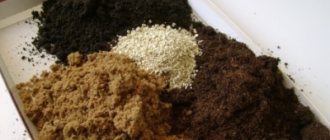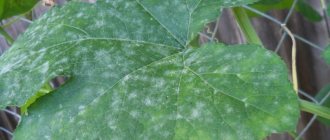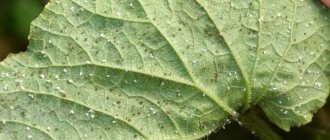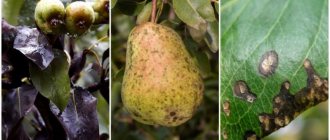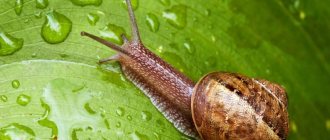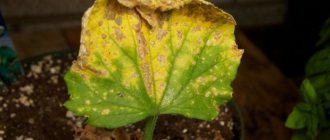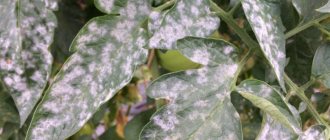What it looks like: description and photos of affected tomatoes
Adults reach approximately 1 millimeter in length, have an oval body, the color of which depends on the season. Females are much larger than males. Adult ticks are greenish-gray, dark green or yellow.
The animal's legs end in a complex claw mechanism , with which they cling to leaves. The mouthparts are adapted for piercing the skin and sucking the juice of plants.
The photo shows what spider mites look like on tomatoes.
Signs of defeat
Since you won’t be able to see the parasites, you can understand that tomatoes are infected by the following signs:
- the presence of small white dots on the leaves at the bite site;
- the lower leaves curl upward and subsequently fall off;
- Tiny lumps of gray color appear on the back side, resembling dust;
- the appearance of a cobweb enveloping stems, leaves and even fruits.
Spider mites on tomatoes
On a note!
The web becomes noticeable only when the plant is severely damaged.
High humidity and hot weather are ideal conditions for spider mites to reproduce. Therefore, spider mites are more common on tomato seedlings in a greenhouse than in open ground.
Why is it dangerous?
At an air temperature of approximately +12 - +14 degrees, females come out of the shelter, settle on the lower part of plant leaves, entangle them in a web, laying eggs. This leads to a change in the color of the leaves and their falling off. Ticks reproduce especially actively in dry, hot weather, at temperatures above +26 degrees. They are able to instantly move from one plant to another.
The salivary glands of these animals secrete complex organic substances that destroy the chloroplasts of plant cells. Mites prefer to be closer to the root zone, where they suck out the sap, interfering with the normal growth and development of the plant. The pest can also infect the plant with dangerous viral infections and gray rot spores.
Reasons for appearance
Pests prefer to settle in dried fallen leaves , then move onto the plant.
Dust on leaves is also a suitable environment for mites. During the winter, the parasite hides under foliage or stones. It is comfortable for the pest to reproduce in a greenhouse, since there are the most comfortable conditions for its existence. Spider mites do not tolerate moisture and reproduce well in a warm place, in open ground or in a greenhouse. Favorable conditions for the appearance of ticks: air temperature + 25- +28 degrees, with air humidity less than 60%.
Fighting spider mites on tomatoes: advice from gardeners
Anton Komaritsky, 63 years old, Tambov region:
After retirement, I decided to take up gardening: I have a lot of free time, I still have health - I grow vegetables both for myself and for sale. And everything would be fine, except that spider mites have become addicted to my tomatoes and cucumbers. I didn’t even know that such an insect existed. In the first year, the mite destroyed half the crop. Now I approach the issue of protecting vegetables in a comprehensive manner: I carry out a lot of preventive measures, and then treat them with Fufanon two more times. I won’t say that I completely managed to get rid of this parasite, but it no longer has a significant effect on the harvest.
Anna Sevidova, 48 years old, Kursk region:
We grow tomatoes in the open ground for ourselves and some for sale. Spider mites have been causing trouble for a long time. It is clear that it lives in the ground and is not easy to destroy. Every year we dig up and disinfect the soil twice (in autumn and spring), but it is not possible to completely destroy the females and eggs of the insect. If the winter was warm and the summer was dry, then the pest attacks the garden in incredible quantities. In such years we use Actellik. I know that the chemical is toxic, but one treatment per season is enough.
Differences from other pests
Signs:
- white small dots on the back of the leaves;
- the leaves of the plant dry out;
- the presence of a delicate white cobweb on seedlings;
- very few flowers on the plant;
- frequent watering does not produce results;
- the reproduction process begins earlier than in other pests.
How to fight?
Options for combating this parasite depend on its quantity and the degree of damage to the tomato. Basically, several methods of struggle are used in practice. In case of severe damage to tomatoes, chemical preparations should be used; in case of minor plant infection, folk remedies will help.
In a greenhouse, the pest reproduces all year round. In this case, biological control measures are used. The predatory mite (Phytoseiulus), according to experts, is capable of destroying this pest. We also must not forget about preventive control measures.
The nuances of treating a greenhouse against spider mites in the spring
There are many varieties of spider mites. They differ in color, are small in size and have a fast reproduction rate. It is also worth noting the viability of ticks. When unfavorable conditions arise, they skillfully hide in different crevices. Usually, pests spend the winter in this way.
Greenhouse treatment options in spring:
- Chemicals;
- Sulfur checkers;
- Biological techniques.
In the spring, the greenhouse can be treated with such preparations as Nero, Akarin, Fitoverm, Vermitek. In some cases, dichlorvos is used. Small pieces of fabric are soaked in this product and placed next to the affected crops. The top of the fabric should be covered with film. Copper sulfate or bleach also works effectively.
The use of sulfur bombs is often used not only to destroy the pest, but also as a preventive measure. The smoke penetrates into all crevices and destroys the entire tick population
When working with sulfur bombs, it is important to follow the instructions. It is necessary to tightly close the greenhouse for several days, after which the greenhouse must be well ventilated
Biological measures are less effective, but safer. Special microorganisms work against ticks. Also, such preparations are good for the plants themselves, stimulating their growth.
How can plants be treated?
If the pest population on tomatoes is large, chemical treatment is recommended. The preparations can be used no later than 15–25 days before harvest.
Application of acaricides
The prepared solutions are sprayed on the plants and the soil near the plantings is disinfected.
Chemicals against this pest that experts recommend:
- "Iskra-BIO";
- "Aktellik";
- "Kleschevit."
It is advisable to spray plants 2-3 times during the growing season.
- " Aktellik ". You can buy Actellik in ampoules of 2 ml. The contents of the Actellik ampoule (2 ml) are dissolved in two liters of water. The price of Actellik in ampoules of 2 ml is 30 rubles.
- " Iskra-BIO ". Iskra Bio is sold in the form of an emulsion in ampoules of 1 ml. The drug "Iskra Bio" 10 ml can be bought for 86 rubles. Spraying is carried out twice during the growing season with an interval of 17-22 days.
- " Kleschevit ." A very affordable product: a 4 ml ampoule costs 20 rubles. Dilute 4 ml of the substance in 1 liter of water.
Special medications at home
In the fight against spider mites at home, you can treat plants with gentle means; if they do not help, only then use broad-spectrum acaricides. Gentle means include:
- Bitoxibacillin;
- Phytofarm.
Bitoxibacillin .
Dilute 40-100 grams of powder per 10 liters of water (water temperature 15-25 degrees). Dilute the product in a small container, then add the required amount of water, mix, spray with a sprayer twice: at the beginning of June and at the end of July. Tomatoes should not be eaten for a week after spraying. Cost of the drug: 20 grams - 20 rubles.Fitoferm .
For 10 liters of water – 100 ml of substance. To prepare the solution, you should pour 1-2 liters of water into a bucket, measure out the required amount of the drug and pour it into the bucket. Stir well, then add the required amount of water and stir again. Spray twice during the growing season. Price: 68 rubles for 10 ml of the drug.
Biological methods
The biological method involves the use of mites that destroy spider mites, as well as the use of biological products. List of effective biological products:
- Akarin;
- Agravertine;
- Bitoxibacillin;
- Fitoverm.
- During treatment with Aktara, phytophagous mites die.
- Fitoverm is characterized by low toxicity for both people and animals.
- Agravertine can be used for a long time, as it is not addictive and does not allow pests to adapt to the effects of its components.
- On the 2nd – 3rd day after treating plants with Akarin, the pests die. The fifth or sixth day is the day of maximum effectiveness of the drug.
Traditional methods
- Infusion of henbane. Spray with the solution at intervals of 6 to 8 days. The infusion is prepared as follows: 1 kg of herb is poured into 10 liters of water and left for 12 hours. Before spraying, add laundry soap.
- Soap solution. A mixture of laundry soap and water is prepared in a ratio of 6:1. The leaves are wiped with the prepared product. In case of massive damage, tomatoes are sprayed with a spray bottle. For spraying, the solution is prepared in a ratio of 4:1.
- Dandelion tincture. For 10 liters of water take 400 g of raw materials. Leave for two hours and spray the tomatoes. Repeat spraying every two weeks.
- Infusion of garlic or onion. These infusions help get rid of ticks in greenhouse conditions. You need to take 400 g of garlic or 200 g of onion peel and pour 4 liters of water, leave for 5 hours, and then spray the tomatoes.
- You can also use infusions of wormwood, potato stems or leaves, walnut leaves, and horseradish.
Fighting methods
There are many methods to combat spider mites. Which method to choose to eliminate this pest will depend on how widespread the plant damage is.
The main methods of controlling spider mites on tomatoes are:
- a mechanical method of eliminating mites is a set of agrotechnical procedures that involve caring for tomatoes. Such procedures include regular loosening of the soil, manual removal of weeds and affected parts of plants;
- chemical treatment - acaricides and insectoacaricides are used to control insects. Plants are sprayed with prepared solutions, greenhouses and greenhouses are also treated, and the soil around the plantings is disinfected. Among the most popular acaricides are Borneo and Sunmite, among insectoacaricides are Actellik and Oberon;
- biological method of processing plants - the use of various phytophages. Infestation of affected plants with insects - predatory mites that eat spider mites, and the use of biological products Akarini, Fitoverm and Kleschevit, which are harmless to humans and crops;
- folk remedies and home remedies - their use does not bring the same results as the use of chemicals, but still helps to overcome the tick. Folk remedies include infusions of onion and garlic, dandelion, tobacco and various herbs.
Overcoming a mite is not easy; it is much easier to prevent plants from being infected by this parasite. To do this, you should follow simple preventive measures, which include:
- in carefully examining the seedlings before purchasing;
- warming up self-grown seedlings under a UV lamp;
- planting tomatoes at a distance of more than 30 cm from each other, since it is difficult for a mite to overcome such a distance in order to infect another plant;
- regular loosening of the soil around crops and timely removal of weeds;
- cleaning fallen leaves from the site in the fall, immediately removing and burning diseased plants.
Fertilizers also play an important role in prevention. Spider mites do not tolerate phosphate fertilizers. In addition, he does not like strong odors, so garlic, celery and basil should be planted next to the tomatoes.
Prevention
Preventive measures include the following:
- Check your plants systematically for any signs of infestation.
- Before purchasing seedlings, carefully check them for mites.
- Plant tomatoes at some distance from each other (about 30 cm).
- Spray plants both inside and outside the greenhouse.
- If tomatoes are grown in a greenhouse, maintain high humidity.
- Ventilate your greenhouse regularly.
- If the greenhouse has windows, install insect screens.
- Destroy all infected plants.
- Collect and destroy pests immediately.
Gardening tips
There are four main rules, the implementation of which allows you to annually collect a large number of aromatic tomatoes from the beds:
- variety selection;
- timely control of parasites;
- planting healthy seedlings;
- selection of the appropriate site;
- prevention and maintenance of appropriate care.
All of the above actions help increase crop yields.
Important. Covered tomatoes are more susceptible to spider mite attacks. Is it possible to get a high-quality, decent harvest of tomatoes? Of course, if you listen to the advice of experienced gardeners.
How to treat a greenhouse against spider mites using traditional methods
When the ovary begins to form on the plants, the use of chemicals is prohibited. This can completely destroy the crop. Processing a greenhouse using traditional methods includes recipes made from herbs or medications.
Some gardeners use dichlorvos or turpentine to combat the pest. Affected plants are sprayed with alcohol, which is diluted with water. Using a spray bottle, spray crops (leaves and stems). Turpentine is also used by saturating the fabric with it.
When using dichlorvos, crops must be isolated by placing a garbage bag over the plants. But this method should be used only when the ovaries begin to form. 3 hours after treatment, the bags should be removed, and the remaining drug should be washed off with water.
Infusions and decoctions of plants:
- Cyclamen;
- Dandelion;
- Calendula;
- Millennium.
Prepare infusions or decoctions. Several procedures should be performed every 8-10 days. The treatment cycle is 1-2 weeks.
Garlic and onions are also used for control. The odor of these components is toxic to the pest. Solutions are prepared and crops are sprayed.
